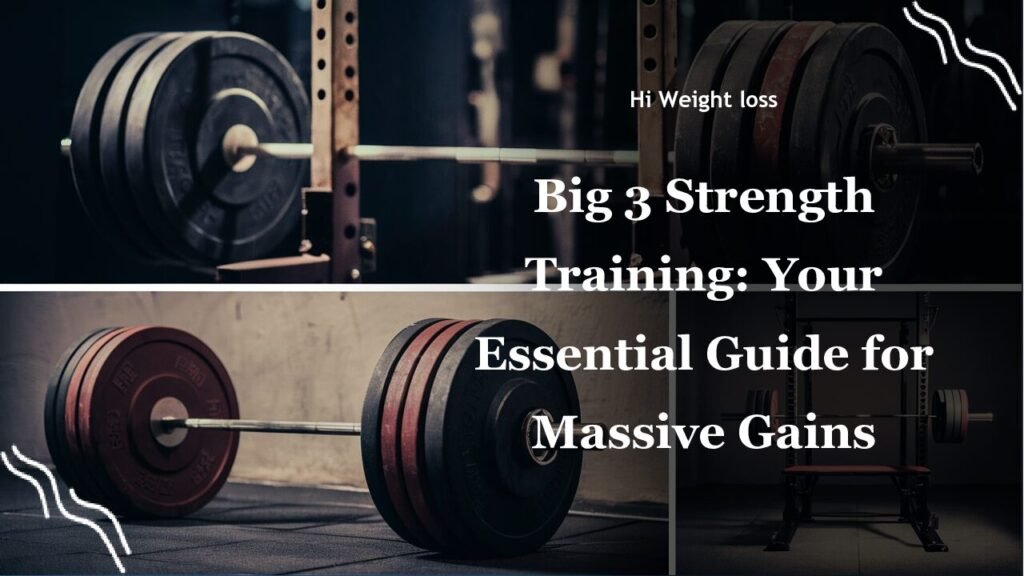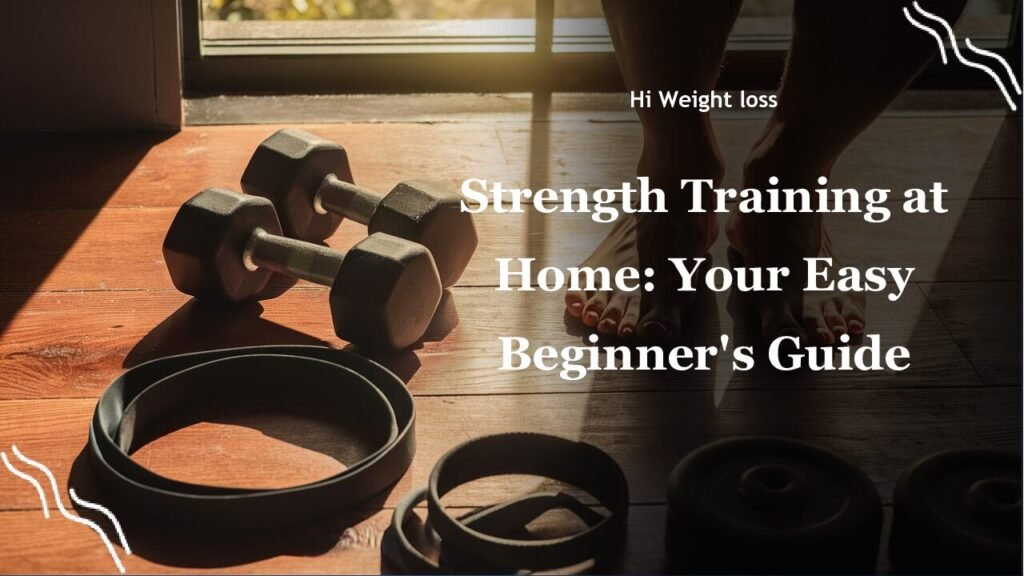“`
Feeling lost in the world of strength training, wondering where to start? It’s a common feeling, and the overwhelming number of exercises can be daunting. Many beginners, and even some experienced lifters, find themselves unsure of which movements truly deliver results. But what if I told you there were three exercises so powerful they could form the foundation of your entire strength journey? This article will break down the “Big 3” strength training lifts, guiding you through why they’re effective, how to perform them correctly, and if they’re the right fit for you.
What are the Big 3 Strength Training Lifts?
The *Big 3* in strength training refers to three fundamental compound exercises: the squat, bench press, and deadlift. These aren’t just any exercises; they’re the cornerstone of many effective strength programs, and for a good reason. They work multiple muscle groups simultaneously, which not only builds overall strength but also promotes significant muscle growth. Think of them as the powerhouses of your workout routine, providing the most bang for your buck.
Why the Big 3 Are So Effective for Muscle Gain
The effectiveness of the *Big 3* comes from their ability to engage numerous muscles at once. These are not isolated movements, but instead, full-body exercises that require coordination and strength throughout your body. When you perform a squat, for instance, you’re not just working your legs; you’re also engaging your core, back, and even your shoulders to some extent. This widespread activation leads to a greater hormonal response, which in turn, promotes muscle growth and overall strength development.
I remember when I first started focusing on these three lifts; I was amazed at how quickly my body adapted. I wasn’t just getting stronger in those specific movements; I noticed improvements in other areas of my fitness, too. My balance got better, I felt more powerful during everyday activities, and my physique began to change in ways I hadn’t expected.
The Squat: The King of Lower Body Exercises
Let’s start with the *squat*, often called the king of lower body exercises. This movement primarily targets the quadriceps, hamstrings, and glutes. It’s also essential for strengthening your lower back and core. But it’s not just about building muscle; the squat promotes better joint stability and improves your functional strength. The squat is the foundation of leg development, and in my experience, is the best way to build leg strength from the ground up.
To perform a proper *squat*, stand with your feet slightly wider than your hips, chest up, core locked. Sink your hips back and descend into a squat, keeping your knees in line with your toes. Aim for your thighs to reach at least parallel to the ground. Push back up through your heels and squeeze your glutes at the top. It’s important to maintain good form throughout the entire movement, even if that means using less weight. If you are a beginner, start with bodyweight squats to get the form down first. This foundation in technique will ensure you are ready for more weight as you progress.
The Bench Press: Building a Powerful Upper Body
Next, we have the *bench press*, a staple for upper body strength and development. This exercise primarily works your chest muscles, but it also engages your shoulders and triceps. It’s crucial for building a strong and powerful upper body and is a key part of any well-rounded strength program. The *bench press* is a great indicator of your overall upper-body pushing strength. Whether you are aiming to have a broad chest or are an athlete, incorporating this lift is essential to upper-body power.
To perform a *bench press*, lie down on a bench with your nose directly under the bar, adjusting the J hooks on a squat rack. Lower the bar to your chest, and then push it back up to the starting position. Make sure you don’t bounce the bar off your chest, and keep your elbows at about a 45 degree angle during the movement to avoid injury. For safety, I recommend always having a spotter, especially when lifting heavy weight.
The Deadlift: The Ultimate Full-Body Strength Test
Finally, we have the *deadlift*, often regarded as the ultimate test of full-body strength. This exercise works the entire posterior chain, including your hamstrings, glutes, lower back, and core. It’s a powerful movement that builds not only muscle but also a strong grip and back. I’ve always felt a tremendous sense of accomplishment after a good *deadlift* session, as it challenges you both physically and mentally.
To perform the *deadlift*, choose a barbell and place it on the floor. Lift the barbell off the floor by bending at the hips and knees, while keeping your back straight. Stand up with the barbell, squeezing your glutes and pushing through your heels. It’s extremely important to focus on proper form to prevent back injuries. If you are unsure about the technique, start with lighter weight and even practice with a dowel rod. It is not a race. Technique over weight, every time.

How to Incorporate the Big 3 Into Your Workout Routine
Integrating the *Big 3* into your workout routine can be done in various ways. A common approach is to focus on these exercises at the beginning of your workouts, when you have the most energy. You could do a full body workout two to three times a week, incorporating the *squat*, *bench press*, and *deadlift* in each workout. I have followed this approach and have seen tremendous gains in my strength and body composition.
Another approach is to split the exercises into different days, for example, you could have a squat and bench day and a deadlift day. This will give you more recovery time for each lift. It’s important to listen to your body and adjust your training as needed. Start with a weight that you are comfortable with, and gradually increase the weight or reps as you get stronger. What has helped me is to keep a training log. In this, I write down the weight, reps and sets. This allows you to track your progress and you can slowly increase the weight as you feel ready.
Who Should Focus on the Big 3?
The beauty of the *Big 3* is that they’re beneficial for a wide range of people, from beginners to advanced lifters. If you’re new to strength training, these exercises provide a solid foundation for building overall strength and muscle mass. For experienced lifters, the *Big 3* are still essential for maintaining and progressing their strength. It is also a foundation for powerlifting, where the lifts are directly tested. However, it’s worth noting that these exercises may not be suitable for everyone. Individuals with severe back problems or other injuries should consult with a healthcare professional before incorporating these lifts into their routine.
Tips for Beginners Starting with the Big 3
If you are new to the world of lifting, it can be daunting to start with the *Big 3*. As someone who has been there, let me give you some tips to make the journey easier. Start with lighter weights or just bodyweight to focus on proper form. Prioritize learning the correct technique from a qualified trainer, and don’t rush your progress. Remember that consistency is more important than lifting heavy weights. As you get stronger, increase the weight gradually. Be patient and consistent, and you’ll see great results.
Potential Risks of the Big 3 and How to Avoid Them
While the *Big 3* are incredibly beneficial, they also come with some potential risks. Poor form can lead to injuries, such as lower back pain, shoulder impingement, or knee issues. This is why it is absolutely vital to learn proper form. It is critical that you listen to your body and avoid lifting too heavy too soon. If you experience any pain, stop the exercise and consult with a healthcare professional or a qualified trainer. It is best to progress gradually, rather than rush and risk an injury.
It’s also important to warm up properly before each workout. Dynamic stretches, foam rolling, and some light cardio can help prepare your body for the demands of these exercises. And do not forget about the cooldown as well, as static stretching will help your muscles recover.
Tracking Your Progress with the Big 3
Tracking your progress is essential for staying motivated and making continuous improvements. Keep a workout log where you record the weights, reps, and sets for each of the *Big 3*. Take pictures of yourself every few weeks or month to see the visual changes. You can also test your 1 rep max, but make sure you have a spotter and are warmed up. It is important to note that strength gains may not always be linear, but with patience and consistency, you’ll see improvements.
| Exercise | Primary Muscles | Benefits |
|---|---|---|
| Squat | Quadriceps, Hamstrings, Glutes, Lower Back | Builds lower body strength, improves joint stability, enhances functional strength. |
| Bench Press | Chest, Shoulders, Triceps | Builds upper body strength, develops chest and tricep muscles. |
| Deadlift | Hamstrings, Glutes, Lower Back, Core | Builds full body strength, develops posterior chain, enhances grip strength. |
Conclusion
The *Big 3* strength training lifts—the *squat*, *bench press*, and *deadlift*—are powerful tools for building strength and muscle mass. They work multiple muscle groups simultaneously, promote a greater hormonal response, and enhance overall physical performance. From my own experience, I’ve found these exercises to be the most effective way to transform my body and improve my strength. However, it’s important to remember that it’s crucial to focus on proper form, gradually increase weight, and listen to your body to prevent injuries. Whether you’re a beginner or an experienced lifter, incorporating the *Big 3* into your routine will provide you with a comprehensive and effective way to achieve your strength and fitness goals. They are not just exercises; they are a foundation for a stronger, healthier you.
So, are you ready to embrace the power of the *Big 3*? Start today and see how these exercises can transform your strength journey. Share this article with someone who may benefit from it, and let’s build some strength together!
FAQ
Are the Big 3 good for beginners?
Yes, the *Big 3* are generally recommended for beginners because they provide a comprehensive way to build overall strength. However, it’s crucial to start with lighter weights or just bodyweight and focus on proper form before increasing the load. Consulting with a qualified trainer can also be very helpful.
How often should I do the Big 3 lifts?
You can perform the *Big 3* two to three times a week, allowing for adequate rest and recovery between sessions. Some people do them on the same day, while others may split them into different days to allow for more recovery for each lift. Listen to your body and adjust based on your individual needs.
What are some common mistakes when doing the Big 3?
Common mistakes include using improper form, lifting too heavy too soon, not warming up properly, and neglecting recovery. Avoid these mistakes by prioritizing proper form, starting with lighter weights, and allowing your body to rest and recover.
Are there any alternatives to the Big 3?
While the *Big 3* are highly effective, there are alternatives. For example, leg press can replace squats, dumbbell bench press is a good alternative to bench press, and Romanian deadlifts can replace deadlifts. However, the *Big 3* are generally considered the most effective way to build overall strength and muscle mass, as referenced in this article in Men’s Health.
Where can I learn more about the Big 3?
You can find more information on websites like Steelsupplements blog, Vitality Fitness Delivered, and Men’s Health, which offer comprehensive guides and resources on the *Big 3*.
“`



